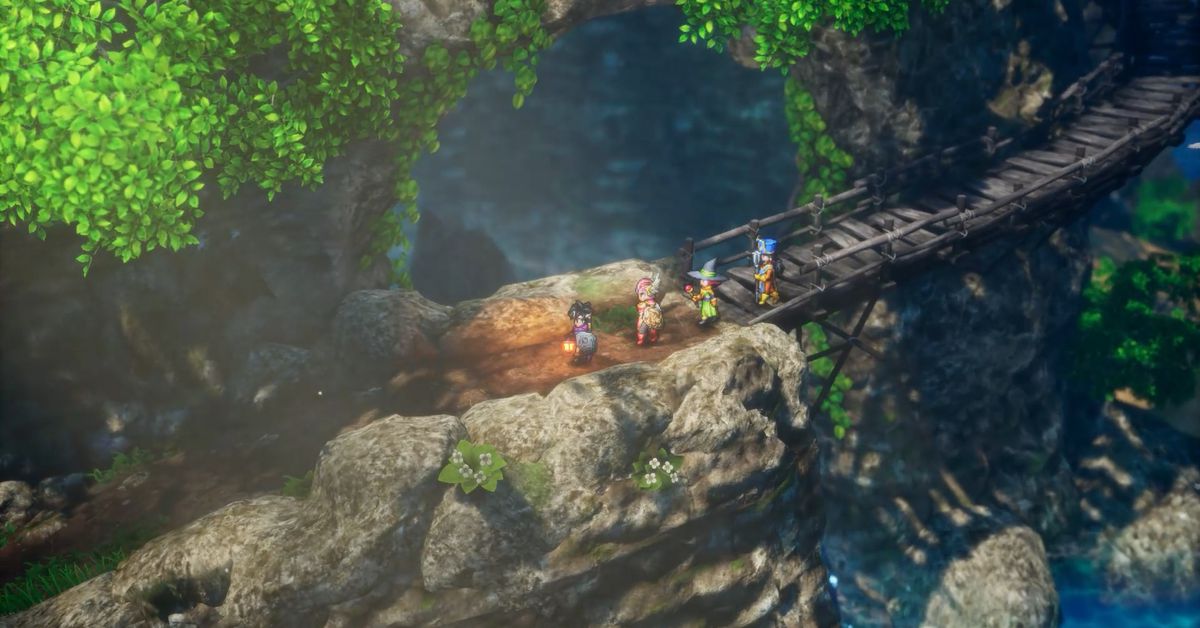We’re in a pretty good moment for sprawling, complex role-playing games. New releases like Metaphor: ReFantazio and Dragon Age Absolution, along with older titles like Elden Ring (including this year’s expansion), Cyberpunk 2077, and Baldur’s Gate 3 have sucked millions of people into their expansive worlds. They can be all-consuming experiences, offering players all kinds of freedom to explore their worlds and characters. But honestly? Sometimes I don’t want to fuss with conversation wheels or make difficult, narrative-altering choices. I just want to go on a big adventure and slowly turn into an overpowered hero fighting monsters — and that’s where the excellent new remake of Dragon Quest 3 comes in.
The game originally came out way back in 1988 (it was initially called Dragon Warrior 3 in North America) and it has a refreshingly straightforward premise: you’re on a quest to kill a great evil that your father failed to destroy many years before. There are a few colorful characters, but there isn’t a whole lot else to it beyond a quest for revenge. This isn’t a game you play for the story. Instead, it’s about going on adventures, exploring strange and dangerous locations, and killing lots of cute blue slimes.
That simplicity has stood the test of time rather well, with systems that are easy to grasp while still offering a challenge (even if the regular battles can eventually get tedious). This is a good thing, because the remake doesn’t change all that much. The exploration and turn-based battles all still feel largely as they did. This means that the game follows a largely predictable path, as you go from one dungeon to the next, visiting towns in between to rest and gear up for the next challenge. There are some additions, like a new character class that lets you collect monsters, along with additional story scenes to flesh out the barebones narrative.
Though it’s mostly the same as the original, there are major changes to the presentation and some notable quality of life features. To start, this version of Dragon Quest 3 looks incredible. It uses the same visual style as games like Octopatch Traveller and Triangle Strategy, which Square Enix awkwardly calls “HD 2D.” Basically, these are still games with pixel art characters, but they explore incredibly detailed worlds. The developers then throw in a tilt-shift effect that gives the whole thing a diorama-like appearance. The result is a game that looks decidedly old-school, but in a slick, modern way. I especially love the adorable monster animations in battle. There’s also an updated orchestral score performed by the Tokyo Metropolitan Symphony, along with all-new voice acting.
It’s more than just an aesthetic overhaul, though. The Dragon Quest 3 remake also makes some very smart tweaks that often make it less frustrating to play. These include a more useful map that makes it easier to find where you’re headed, an option to speed up battles so you can grind quicker, and a handful of difficulty options. These may sound small, but they’re the kind of modern conveniences that can make many older games difficult to play, especially ones built around repetitive combat like a classic RPG. Smoothing out those few rough edges has a big impact on the overall feel of a game like Dragon Quest 3.
Even though it’s technically the third game of the series, this version of Dragon Quest is also a great place for newcomers to see what the series is all about (and really, things haven’t changed all that much over the years). It’s a pretty, approachable way to experience an epic quest without getting overwhelmed by story or features. It’s just you, some swords and magic, and a whole lot of monsters to defeat. Sometimes, that’s all you really need.
Dragon Quest 3 HD-2D is available now on the Switch, PlayStation, Xbox, and PC.

